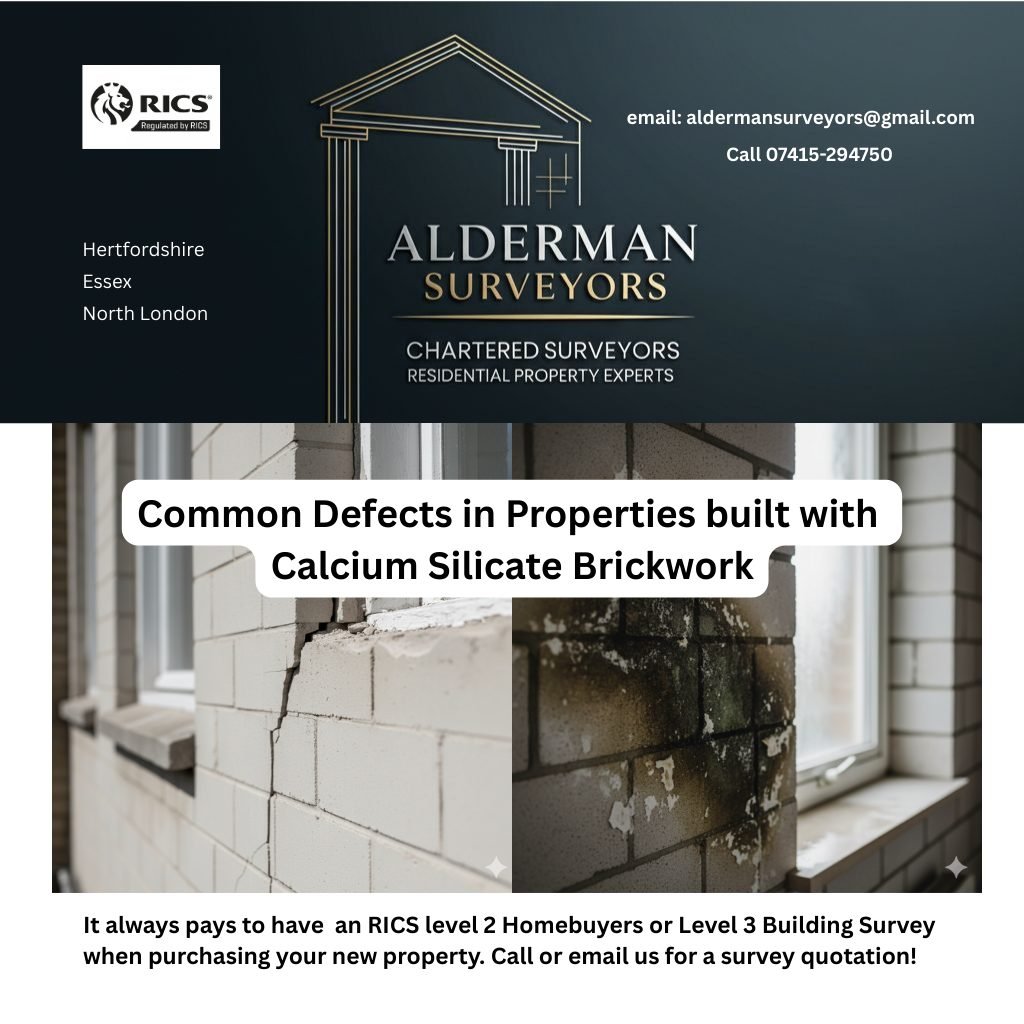
Understanding the Challenges Behind a Clean Finish
Calcium silicate bricks are popular for their clean, uniform appearance, but they also come with a few quirks. If not handled correctly, these quirks can lead to serious building defects over time.
In this blog, we’ll explore the most common problems associated with calcium silicate brickwork and what you should look out for as a homeowner or property buyer.
1. Shrinkage & Cracking
Unlike clay bricks, which naturally expand, calcium silicate bricks can shrink after being laid. If the building design doesn’t account for this movement with proper expansion joints, you may notice:
- Stepped cracks
- Diagonal cracks in the brickwork
These cracks not only affect appearance but can also compromise structural stability.
2. Moisture Problems
High Water Absorption
Calcium silicate bricks tend to absorb a lot of water. During heavy rain, they can soak up moisture, which may lead to damp issues inside the property.
Frost Damage
Although these bricks have good frost resistance, continuous exposure to moisture combined with freezing and thawing cycles can cause the surface to:
- Flake
- Crack
- “Spall” over time
Efflorescence
Another side effect of high water absorption is efflorescence — the white, powdery salt stains that often appear as moisture evaporates from the bricks.
3. Brittleness & Softness
Calcium silicate bricks are generally more brittle than clay bricks, making them prone to:
- Chipping
- Surface damage during transport or installation
- Breakage if the wall is subjected to impact
This characteristic requires extra care during construction and maintenance.
4. Incompatible Mortar Issues
Because calcium silicate bricks are softer, using a mortar that’s too strong can create problems. Hard mortar is less flexible, which means instead of absorbing natural movement, the pressure gets transferred to the bricks — leading to cracking.
Final Advice for Homeowners
If you’re dealing with a property built using calcium silicate bricks, it’s crucial to understand these characteristics.
👉 A professional building surveyor can help identify existing or potential problems and recommend the right solutions before they turn into costly repairs.

